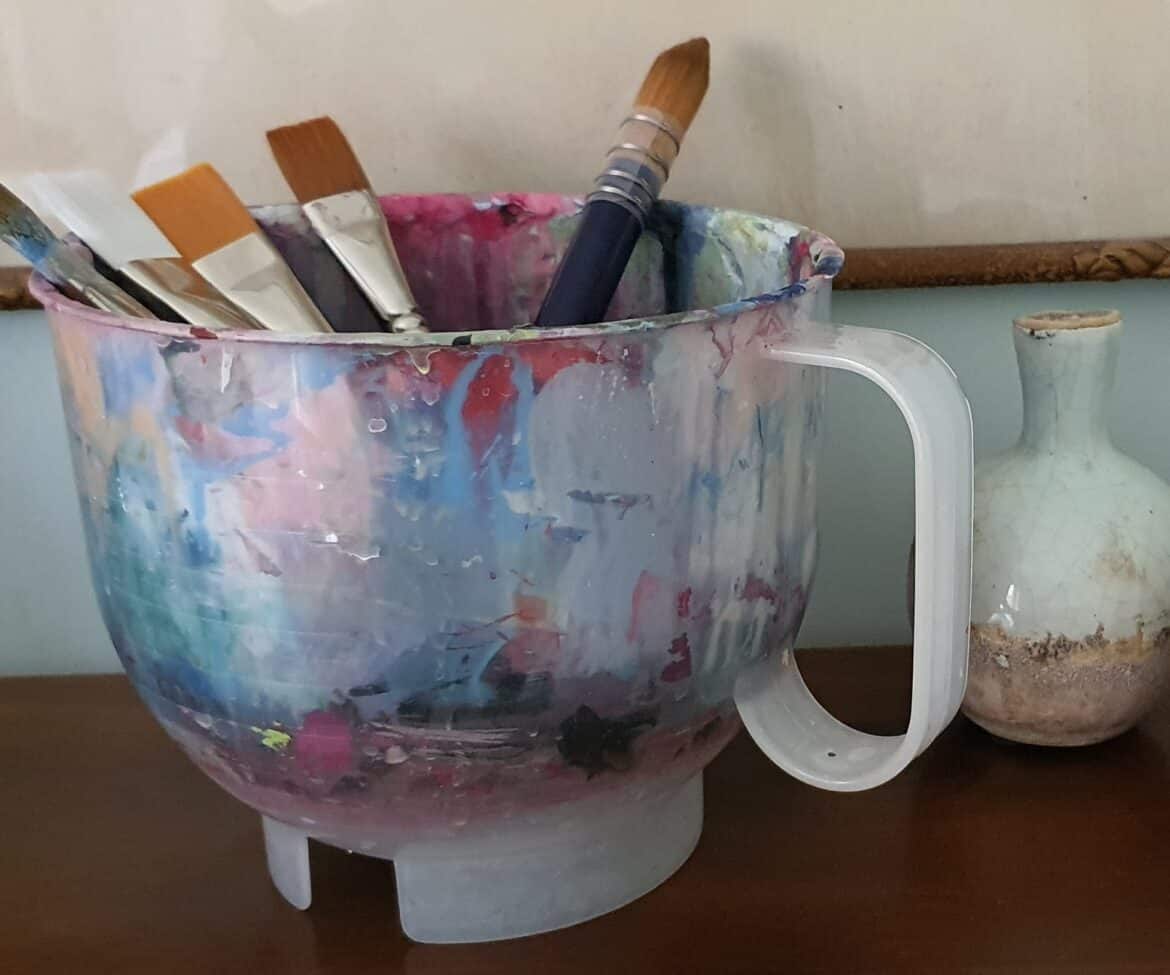Natural fibre or synthetic paint brush?
After using both natural fibre and synthetic paint brushes, I would have to say I get excellent results from a top quality synthetic brush. A natural sable brush is really a beautiful thing, but they have a high price tag.
If you don’t want to spend that much, you can still do really well with a synthetic brush from Princeton. I buy most of my art materials from Art to Art, and this is where I was first introduced to Princeton brushes. ( www.arttoart.net )

Background painting, which brush?
For a large background, choose a flat shading brush, anywhere between a 3/4 inch and a 1inch. Choose a softer fibre brush which is still strong enough to work well for you.
Do not use a coarse fibre, somewhat inflexible brush ( unless it doesn’t matter to you that you have strong brush marks.)

Which brush to use for very fine, detailed work?
Some of my acrylic paintings require a very fine point to my brush. The best results come from using a water-color brush with a fine tip.
The trick is not to load the brush with too much paint when you are doing the finer details. It also works better if the paint is quite fluid, with no sticky attributes at all.
This means you have to keep rinsing your brush completely, before dipping only the tip into your paint for specific ultra-fine detail.


The style of your painting determines the brush
If your style is impasto and a bit rough, you would choose a large mop-head type of brush. The fibres would be strong and can take a good paint load. Use this in addition to your palette knife.

Using a dry brush
Occasionally I will use a dry brush to blend my paint on the canvas. It is really useful when you don’t want to add any more paint and achieves a lovely effect. The dry brush works better if it has firmer bristles.
When you start painting, always have several brushes ready to go, so you can work quickly. As always, keep rinsing your brush, if you don’t have time because it’s a tricky spot, you can easily jump to a new brush and pop the other one in your water.
Caring for your brushes
If you don’t want to keep buying new brushes (which is quite costly), clean your brushes properly. Get right into the base of the fibres every single time you are doing a clean-up at the end of your session.
My friend Ian at my art class (I’m learning how to paint with oils), made an excellent suggestion which I have tried successfully: after your initial clean, wash your brushes with Sard Wonder soap and warm water.
If you don’t have Sard, I’m sure any other laundry soap would do the trick. Ian was also an art teacher so he has a few great tricks up his sleeve.
This is doubly important when washing your varnishing brushes. I have lost so many brushes to varnish! And you really want a good brush for varnishing because the last thing you want is brush marks from it.
See my post on varnishing here.
I have rinsed them thoroughly, and then the next day they are hard and crusty! So frustrating. So clean thoroughly, then leave them in clean water over-night. You will see more varnish has come into the water, even after that thorough clean.
If you are still not quite sure which is the best brush for your intended painting, spend some time on the manufacturer’s website. This is because your painting is only as good as the brushes you use. It is worth the effort.

